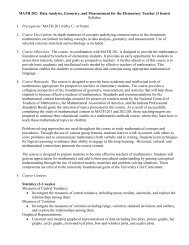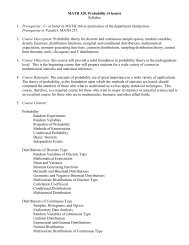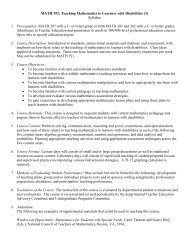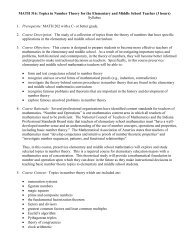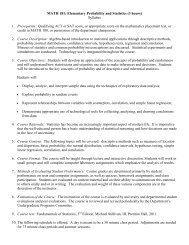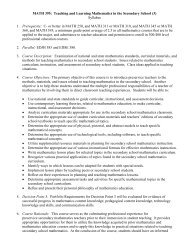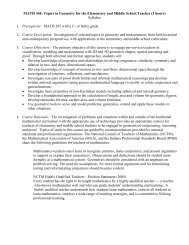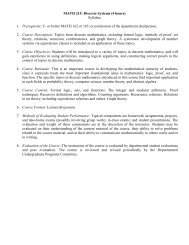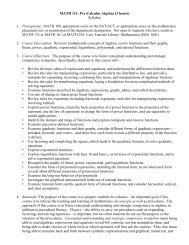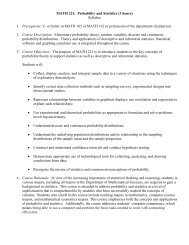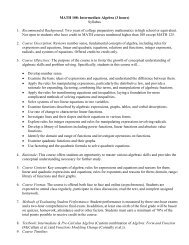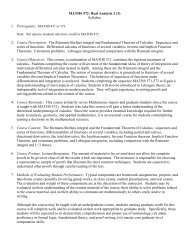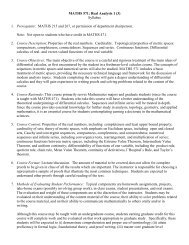MATHS 166: Calculus 2 (4)
MATHS 166: Calculus 2 (4)
MATHS 166: Calculus 2 (4)
You also want an ePaper? Increase the reach of your titles
YUMPU automatically turns print PDFs into web optimized ePapers that Google loves.
MATH <strong>166</strong> Learning Objectives<br />
Students will be able to:<br />
1. Compute exact values for integrals using the following techniques of integration:<br />
a. Integration by parts<br />
b. Trigonometric substitution<br />
c. Partial fractions<br />
2. Compute approximate values for integrals using numerical methods, including the<br />
Midpoint Rule, the Trapezoidal Rule, and Simpson’s Rule.<br />
3. Determine error bounds associated with numerical methods such as the Midpoint<br />
Rule, the Trapezoidal Rule, and Simpson’s Rule.<br />
4. Recognize and solve problems involving applications of the definite integral.<br />
Such applications include:<br />
a. Areas between curves<br />
b. Volumes of solids of revolution<br />
c. Surface areas of surfaces of revolution<br />
d. Work<br />
e. Average value of a function<br />
f. Arc length<br />
g. Hydrostatic force<br />
h. Center of mass<br />
i. Probability<br />
5. Compute exact values for improper integrals.<br />
6. Use the Comparison Test to determine whether an improper integral converges.<br />
7. Define the following:<br />
a. Infinite sequence<br />
b. Convergence of an infinite sequence<br />
c. Infinite series<br />
d. Alternating series<br />
e. Convergence of an infinite series<br />
f. Absolute convergence of an infinite series<br />
8. Compute the sum of a geometric series.<br />
9. Determine whether a positive-termed series converges using various tests,<br />
including:<br />
a. Integral Test<br />
b. Comparison Test<br />
10. Determine whether an alternating series converges using the Alternating Series<br />
Test.<br />
11. Determine absolute convergence using:<br />
a. Ratio Test<br />
b. Root Test<br />
12. Compute the radius of convergence and interval of convergence for a power<br />
series.<br />
13. Compute the Taylor series representation of a smooth function.<br />
14. Recognize a MacLaurin series as a special case of a Taylor series.



